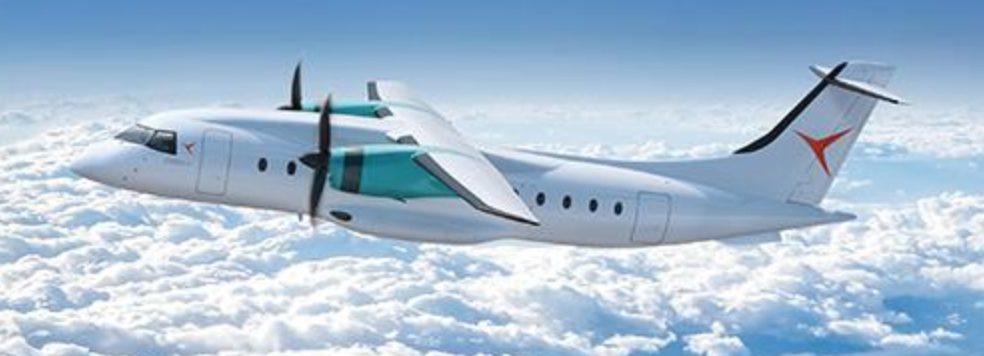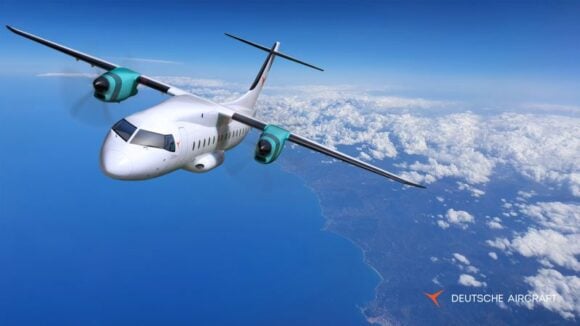
2023 07 13 16.13.17
Deutsche Aircraft is designing the D328eco to be environmentally friendly. Despite a fuselage stretch and nine additional seats, the aircraft will be lighter than the Dornier 328 upon which it is based. Significant attention is being paid to upgrading materials, aerodynamics, engines, control systems, and avionics to apply state-of-the-art technology. This aircraft is projected to have a 30% plus lower fuel burn per seat than the older regional jets it will replace. All of that is well and good, but new competition will be coming. Can one future-proof a turboprop?
The aviation industry is on the cusp of technological change, particularly for future propulsion technologies. Electric airplanes, powered by batteries, hydrogen fuel cells, or even direct burn of hydrogen, now appear on the horizon as the industry examines alternatives to reach carbon neutrality by 2050. One of those options is to utilize Sustainable Aviation Fuel (SAF), which can provide carbon-neutral operations. The engines for the D328eco, the latest PW127 variant from Pratt & Whitney Canada, are more fuel efficient and are designed to use either JetA or SAF.
While full utilization of SAF can provide nearly all of the necessary carbon reductions, it has higher costs than today’s “fossil fuel” JetA. Moreover, there is a massive shortfall in capacity today, as investments are just ramping up. The Power to Liquid (PtL) method for producing SAF entails capturing carbon from the atmosphere and combining it with water electrolysis to generate synthetic liquid hydrocarbon fuels. This process has been known for more than a century and is based on the process developed by Franz Fischer and Hans Tropsch in German in 1923. There is a pathway to carbon neutrality for the industry, but it will take significant investment.
While the auto industry is the primary source of atmospheric carbon, the aviation industry is quite visible because of the higher energy levels required for high-speed flight. Because aviation is visible, we are already seeing restrictions, such as those at Amsterdam Schiphol Airport coming into play.
Research and development of alternative propulsion systems is well underway and participating in that research is one way to “future-proof” an airplane. After all, if the technologies can be tested on your airplane, you will have a leg up if the results show they are worthwhile to apply since they’ve already been tested. We have seen this for decades in the US when OEMs work on NASA-funded research projects.
Deutsche Aircraft has such a relationship with DLR, the Deutsches Zentrum fur Luft- und Raumfahrt (German Aerospace Center), and will use a Do328 as the testbed for new propulsion technologies. Technologies being studied include electric propulsion, advanced battery systems, hydrogen fuel cells, direct burn hydrogen, and hybrid options as alternatives to existing “fossil fuel” propulsion systems.
The Bottom Line:
Should any of these technologies prove promising or profitable, Deutsche Aircraft will be able to install them on its aircraft as appropriate, having been a part of the testing process. The same processes utilized to test the concepts would likely be used in a production environment, giving DA a leg up on its competition. If they do not work, the existing model can be operated using power-to-liquid produced SAF and still reach the carbon neutrality goals.
Either way, the D328eco will remain competitive, irrespective of which power source technologies emerge. This “future-proofs” the aircraft as viable through 2050, by which time the industry promised to be carbon neutral. This D328eceo turboprop is well positioned for today, and to evolve for tomorrow.
Views: 43



